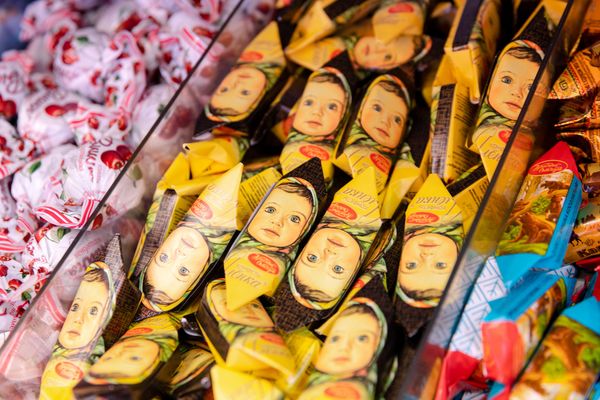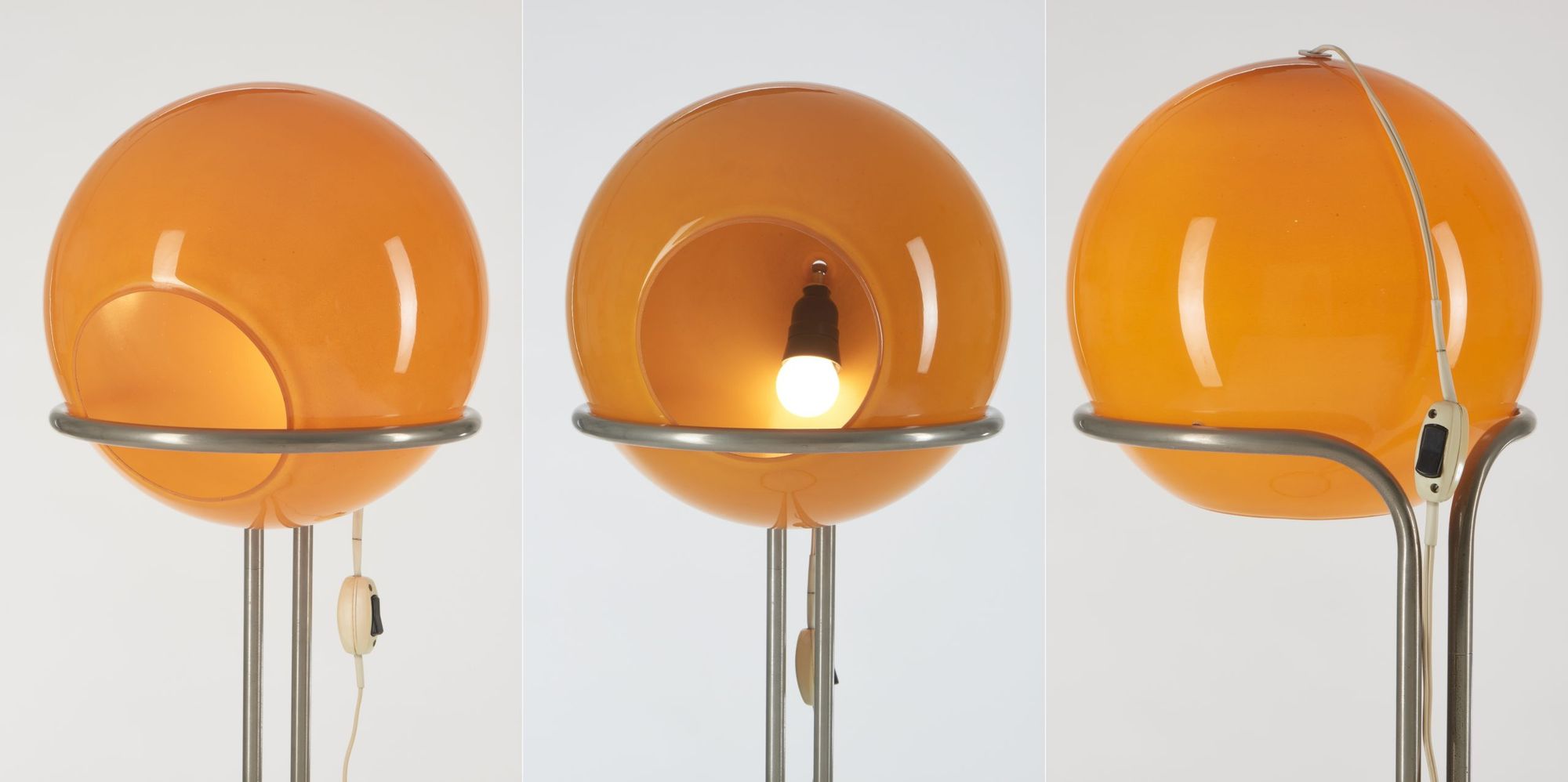The selection of our Object Fetish series did not feature before the work of the Munkácsy Mihály Prize-winning glass designer Tibor Házi. However, as the collections of the Museum of Applied Arts continue to grow, even with the major reconstruction and reopening works, the latest episode is about a truly recent acquisition of the artwork, accompanied by a research full of fortunate twists and turns.
Written by Piroska Novák
The collection of the Museum of Applied Arts, courtesy of Mihály Pohárnok and the Design Center, includes objects, mostly prototypes, created as a result of the systematic design experiment of the Kitchen Program for Prefabricated Houses (1972-1975). Among them is a set of bowls made at the Ajka Glass Factory [1], designed by Tibor Házi. The glass designer’s work was, therefore, highly underrepresented in the collection, until our former colleague, photographer Dávid Kovács, offered to buy Házi’s simple yet decorative opaque orange glass drilled floor lamp with its airy, curved metal frame. The photographer, who works for the Transzparencia-program, which aims to digitize the collection, has a serious collection of lamps, and apart from one or two domestic pieces, his object fetish focuses on Italian-Yugoslavian Guzzini-Meblo products (these objects were partly covered by Kitti Mayer in Part 8 of this series).[2]

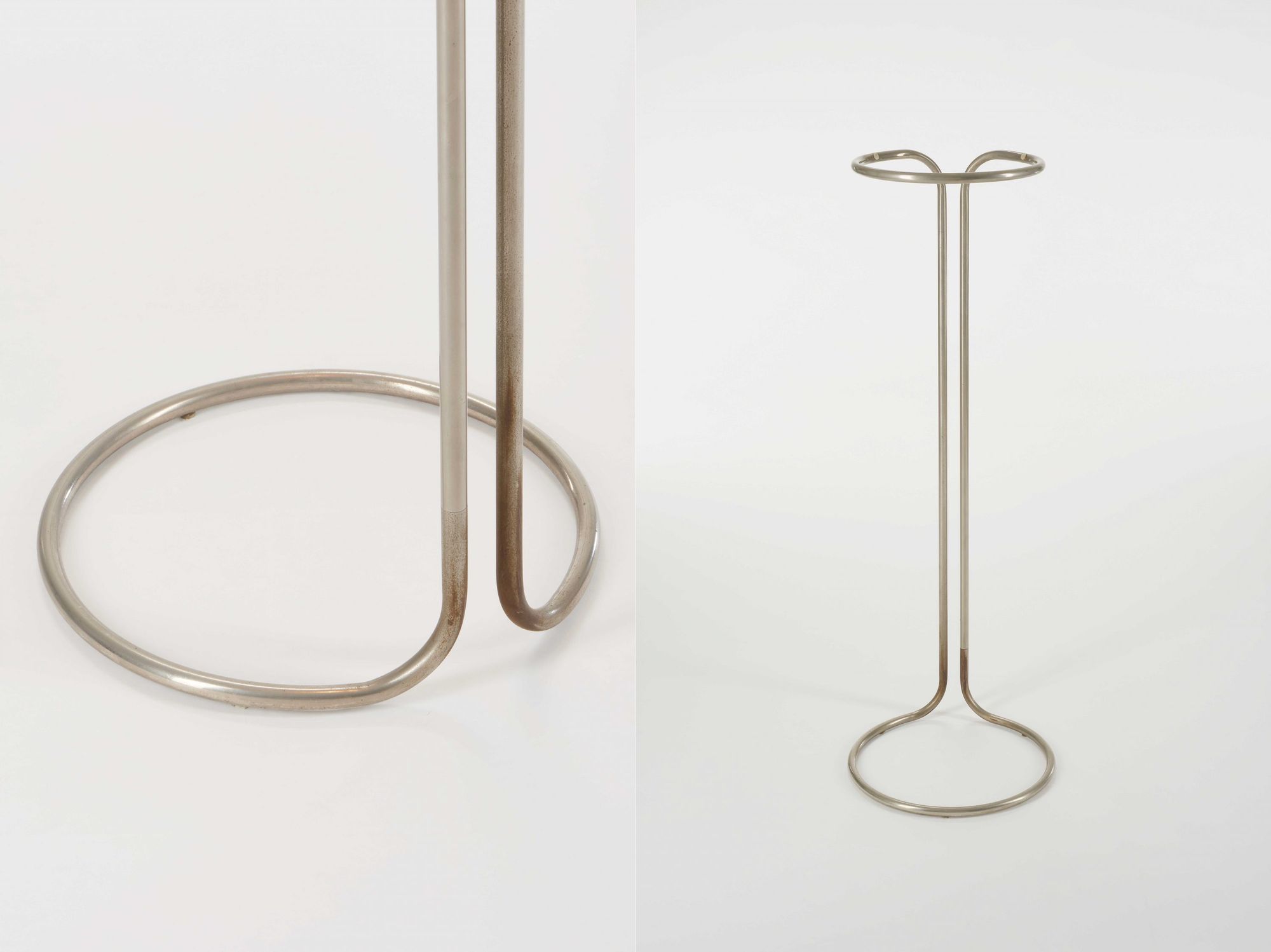

Photo 1-3: Tibor Házi: Floor Lamp (no. 2021.490.1.1-2.) Iparművészeti Vállalat (Applied Arts Company), 1973 (design) Photos: Museum of Applied Arts, Ágnes Soltészné Haranghy
The purchase, delivery, cleaning and photography of Tibor Házi’s floor lamp was followed by the research work that accompanied the inventory of the object. The story took a fortunate turn here, as while browsing the database of the ArcanumDigital Library, I came across the brochure of the 1987 joint exhibition at Békéscsaba of Tibor Házi, Béla Kuzmann and László Kuzmann. In it, Házi himself presumably writes about his lamps and mentions mechanic Gyula Pallás—the metal parts of the lamps were made in his workshop. A search for the name of the mechanic brought up the website of the Pallás műhely, which is now run by Gyula Pallás Jr. Dialing the phone number of the workshop was perhaps the biggest surprise, as the master remembered the long-lasting cooperation between his father and Tibor Házi. Our brief conversation was followed by an exchange of e-mails and then a donation of additional lamps of Tibor Házi. I was able to measure these objects in the workshop on Öv Street, where their metal parts were made. Jr. Gyula Pallás directed me to Vince Házi, the youngest child of Tibor Házi, whom I interviewed by phone. The following information is provided by Mr. Gyula Pallás and Vince Házi, which are important and invaluable sources, given that there is very little information available about the work of Tibor Házi. His lamp series remained obscure in the contemporary press, and theorists were distracted by the works of other artists of the period, such as Sándor Borz Kováts and the Opteam design group.
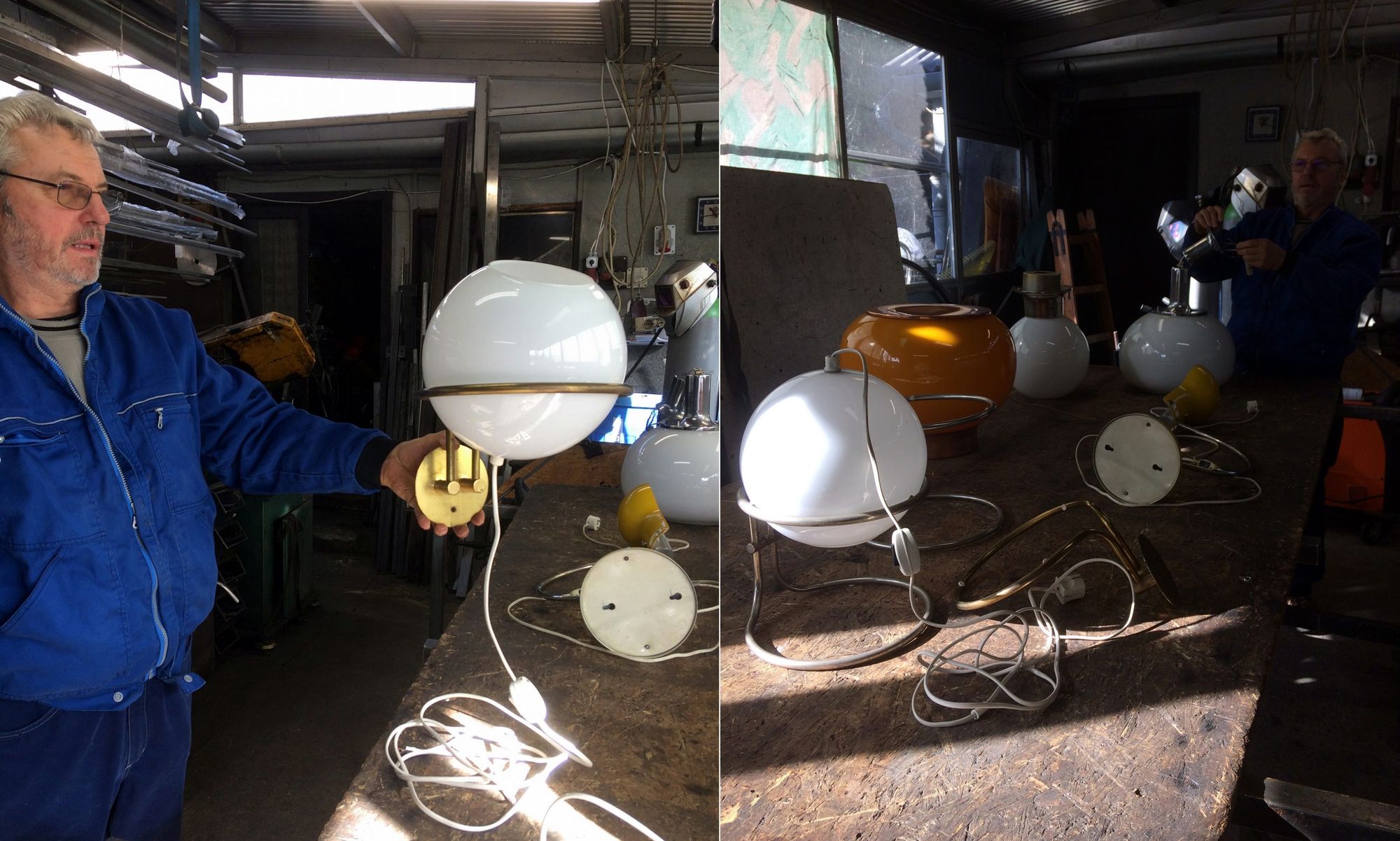
Photo 4: jr. Gyula Pallás with lamps of Tibor Házi, in the workshop on Öv Street. Photos: by the author
Tibor Házi was born in Sarkad in 1946, later he and his family moved to Székesfehérvár. Between 1966 and 1971 he studied glass-making at the Hungarian College of Applied Arts, his master was György Z. Gács. From 1972 onwards, he regularly designed for the Applied Arts Company, and from 1973 he designed several lamp families. Perhaps the best-known and the most widely produced of these is a collection with chrome and nickel-plated bent steel tubes for the frames and blown opaque white or opaque orange, and, less frequently, smoked or colorless glass for the characteristic spherical lampshades. In his 1987 exhibition brochure, Tibor Házi wrote about the series in the spirit of systematic design: “The principle is simple: a glass globe which evenly diffuses the light of an incandescent lamp placed in the center plus a metal construction appropriate for the intended use. Over the years, the basic type has evolved into a complete lamp family with 17 table-, floor-, wall-, ceiling- and pendant lamps. With the variation of glass globes in different materials and colors, more than half a hundred lamps can be produced, making it possible to light an entire apartment or even a hotel.”
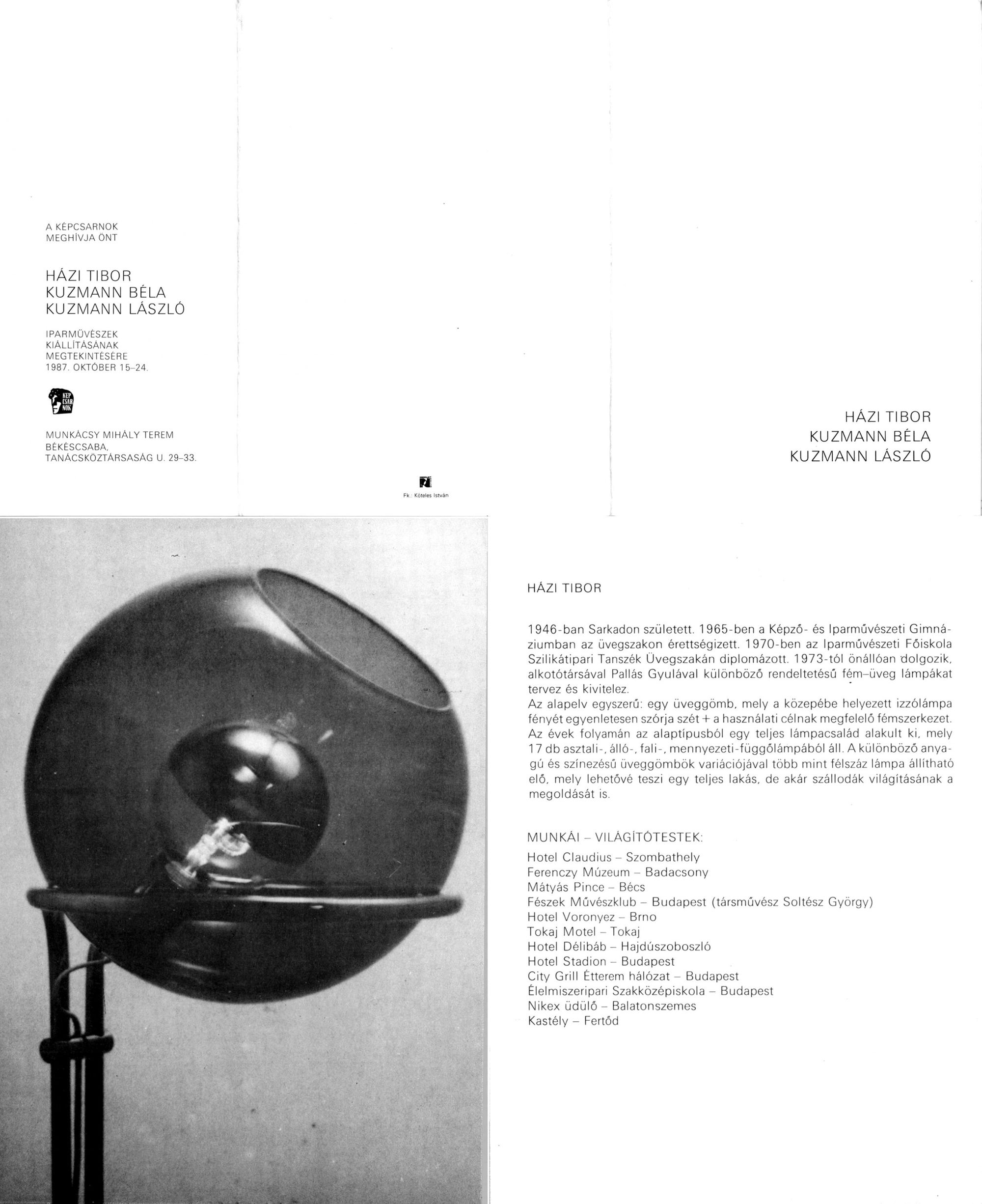
Photo 5: Brochure of the joint exhibition of Tibor Házi, Béla Kuzmann and László Kuzmann. Békéscsaba, Képcsarnok—Munkácsy Mihály Hall, October 15-24, 1987. Source: Arcanum Digitális Tudománytár
The design principle of the lamp family, which consisted of combinable pieces, was indeed simple, but their production required a coordinated organizational effort on the part of the designer.[3] The glass globes were blown at the Tokod Glass Factory, but the opaque orange pieces had to be transported all the way to the Parád Glass Factory, where they could be colored. The metal frames were made in the workshop of Gyula Pallás according to the following process: the iron tubes were cut to size, then polished, then bent, finally placed in a galvanic bath, the ceiling and pendant lights were chrome-plated, the other types were nickel-plated. Before bending, lead weights were placed in the tubes of the floor lamps to minimize the possibility of them tipping over. In the early examples, made around 1973, the long parallel tubes were not held together by cross straps (as in the example in the Museum of Applied Arts), but later the two cross straps also served the function of “catching” the wire. The mechanism used to bend the metal can still be seen in the workshop, similar to the injection molding machine used to make the three plastic discs for the lower and upper rings of the frames—the white plastic discs also provided stability, and on the upper ring they held the removable and rotatable glass globe. The plastic discs were called “fleas” between each other in the workshop.

Photo 6: Metal bending equipment in the Pallás Workshop. Photos: the author
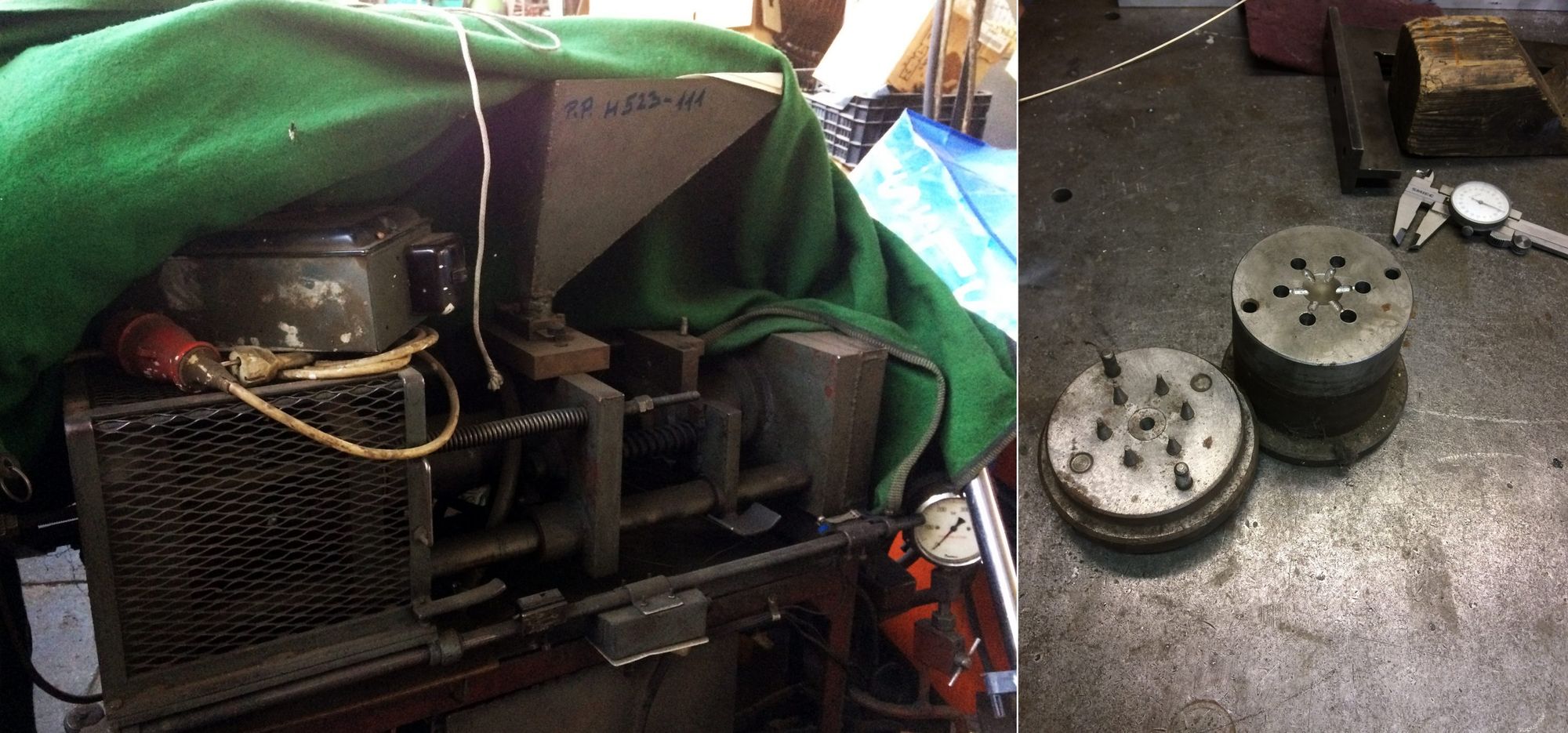
Photo 7: The old injection molding machine and injection molds in the Pallás Workshop. Photos: the author
The glass globes were drilled by Tibor Házi himself with a special tool he made. He did most of the wiring and assembly of the parts himself—sometimes with the help of his eldest son László Házi—in his workshop on Hungária Boulevard or in his studio in the basement of his family home.
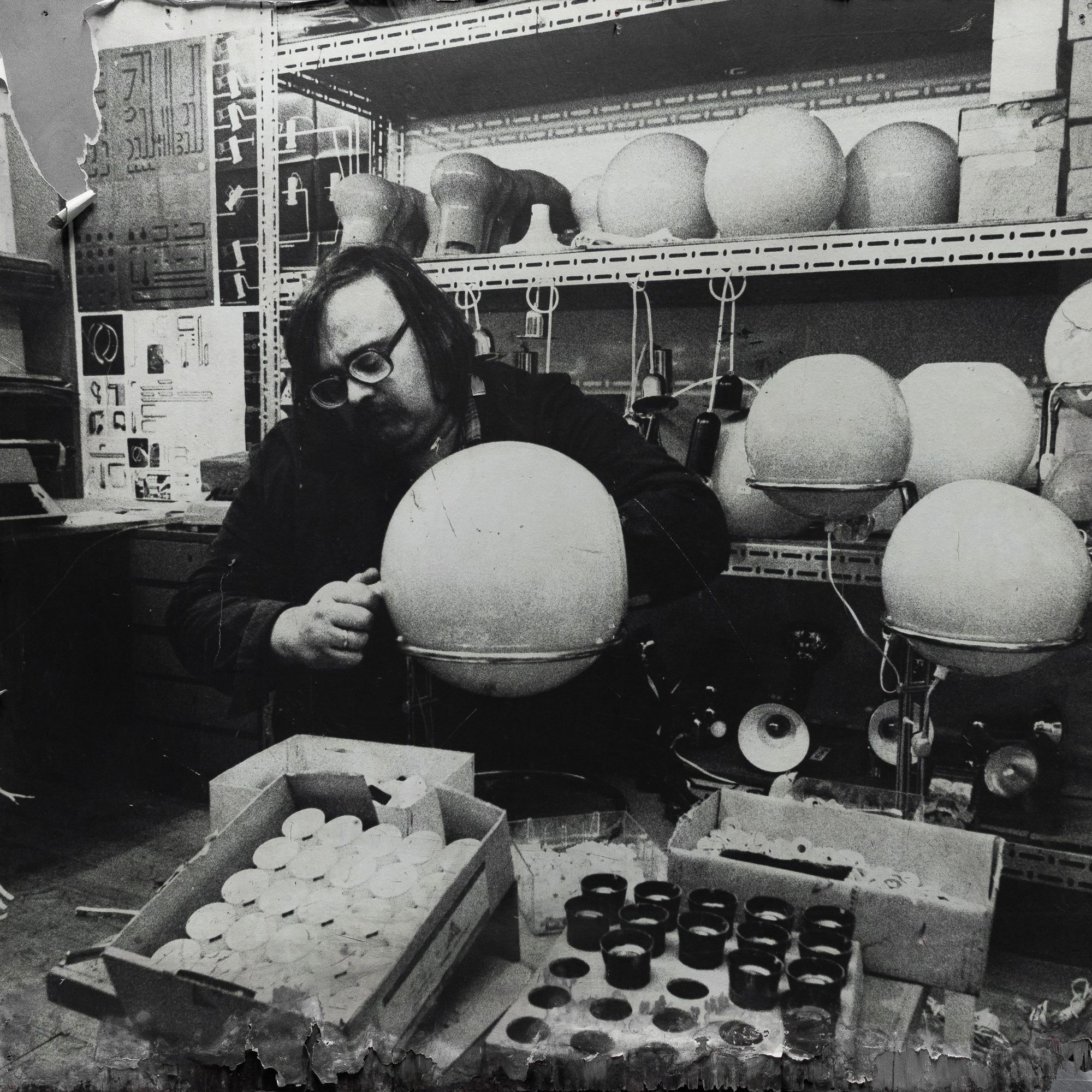
Photo 8: Tibor Házi putting together a globe lamp. Photo credit: Vince Házi
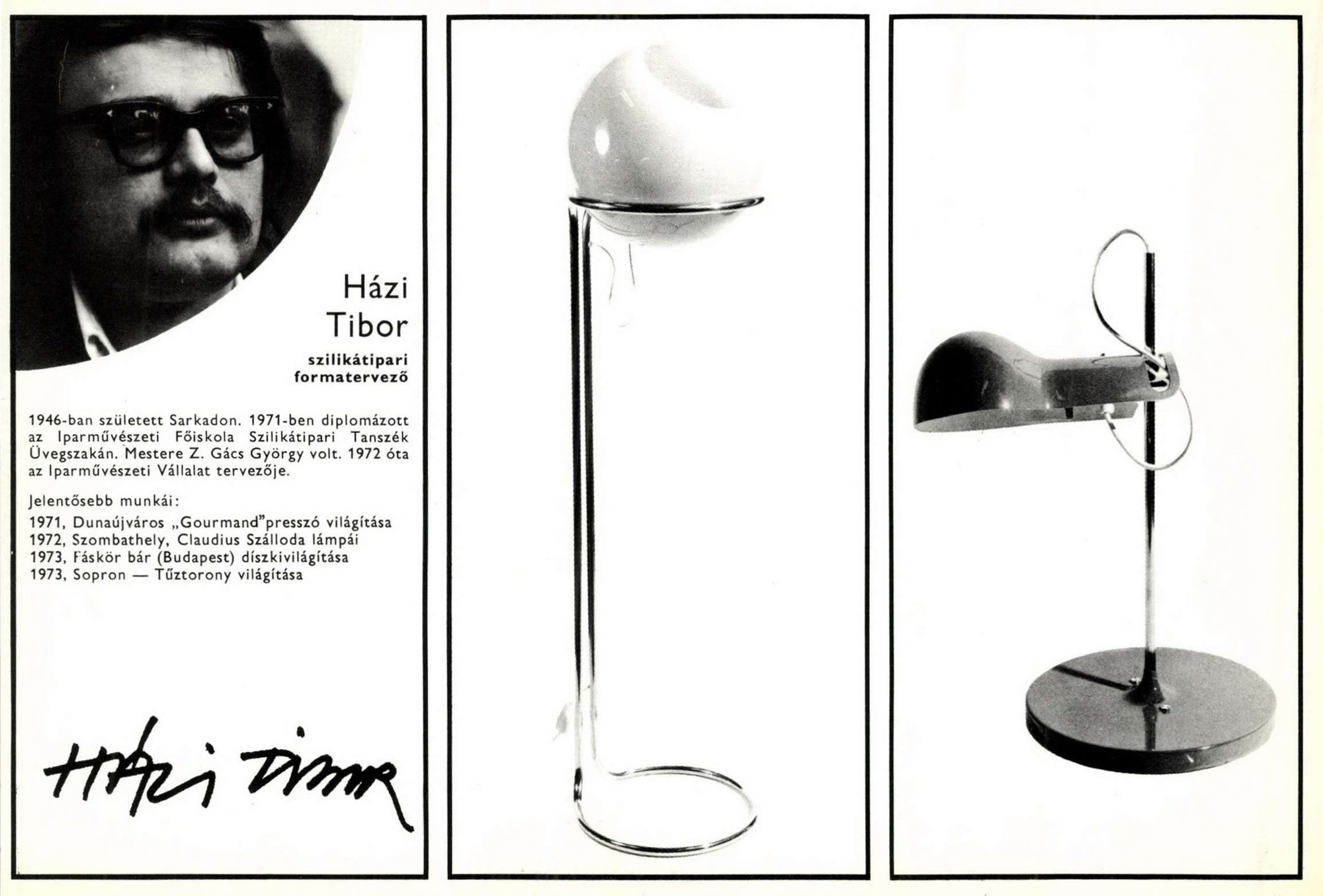
Photo 9: Tibor Házi’s page in the catalogue of the Tárgy és alkotója (Object and its creator) exhibition. Budapest, Iparművészeti Vállalat—Csontváry Terem, 1974 Source: Arcanum Digitális Tudománytár
Despite the complex, artisanal, even manufactory production, Házi’s objects were the lower-priced items in the range of the Applied Arts Company’s lampshade shop on Tanács Boulevard. It should be added that, depending on the type, you could buy the series for the average price of half a month or a month’s salary.
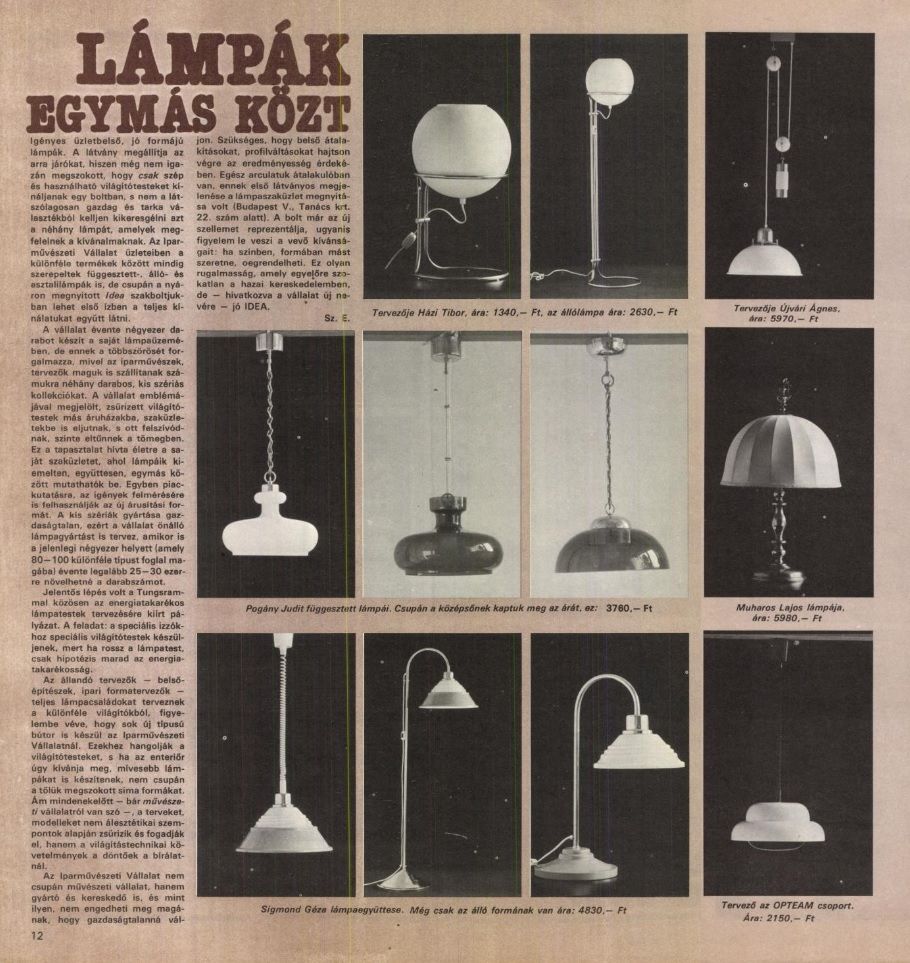
Photo 10: Tibor Házi’s table lamp is available for 1340 HUF, his floor lamp for 2630 HUF in the IDEA lamp shop of the Applied Arts Company in 1984. Source: Sz.E.: Lámpák egymás közt In Lakáskultúra. vol. 19 1984/6, 12-13.
Tibor Házi’s globe lamps were very popular among customers. His son said that when he visited Gazdagrét, there was not a block of panels in whose window he did not see two or three lamps, their popularity was surpassed only by the rice lamps of the IKEA chain arriving in Hungary in 1990.[4]
The modern, clean, yet distinctive uniqueness of the design of the globe lamps—a worthy successor to the world-famous forerunners of Hungarian pipe furniture design, just think of the work of Marcell Breuer—can be seen by looking at the contemporary range of products, for example in the Skála and Domus department stores.
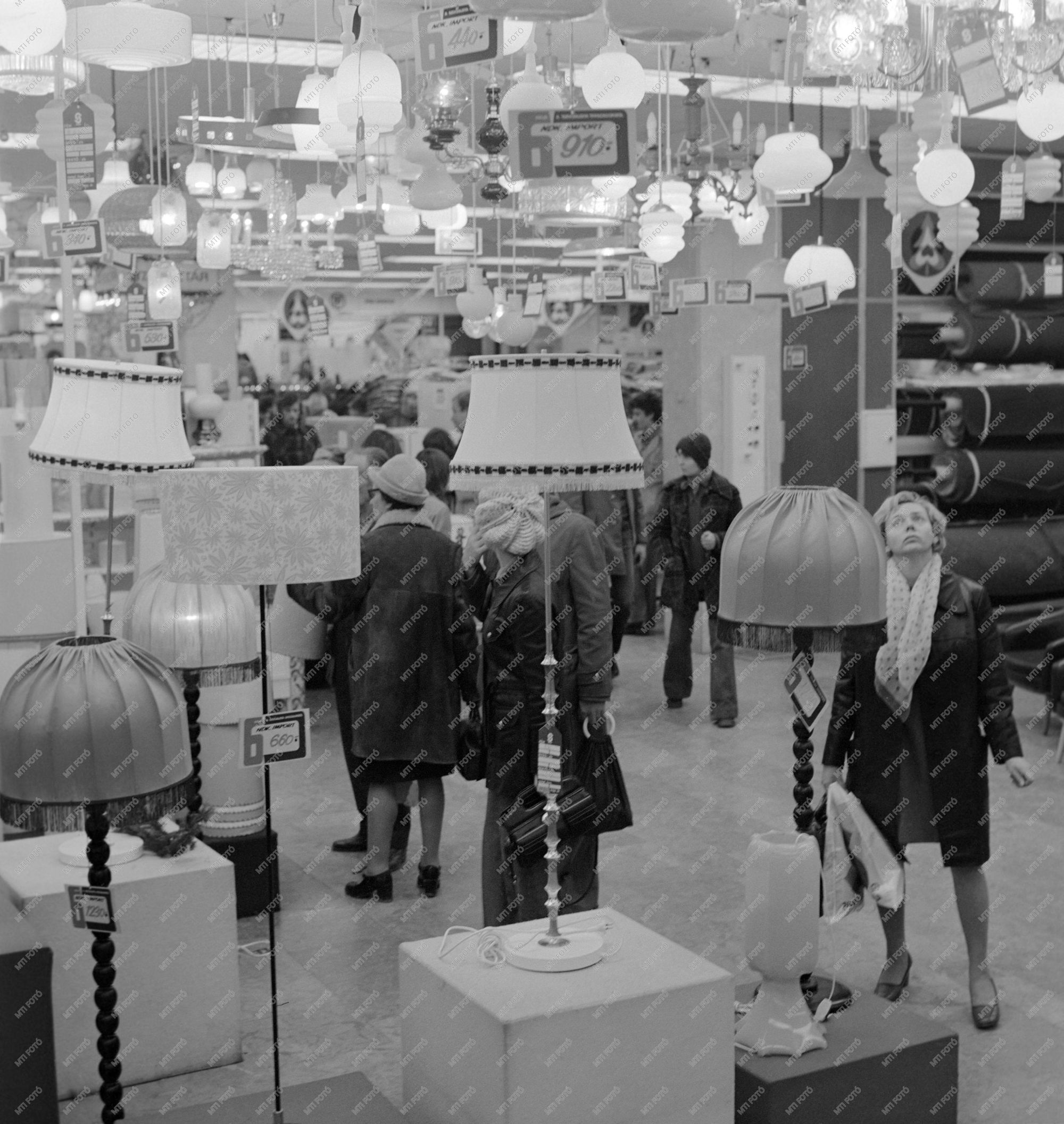
Photo 11: “Shoppers look at the lamps and chandeliers in the technical department of the Skála department store, where the Christmas market has begun—Budapest, November 22, 1976.” MTI Photo by Lajos Soós. Source: MTVA Archívum Fotótár
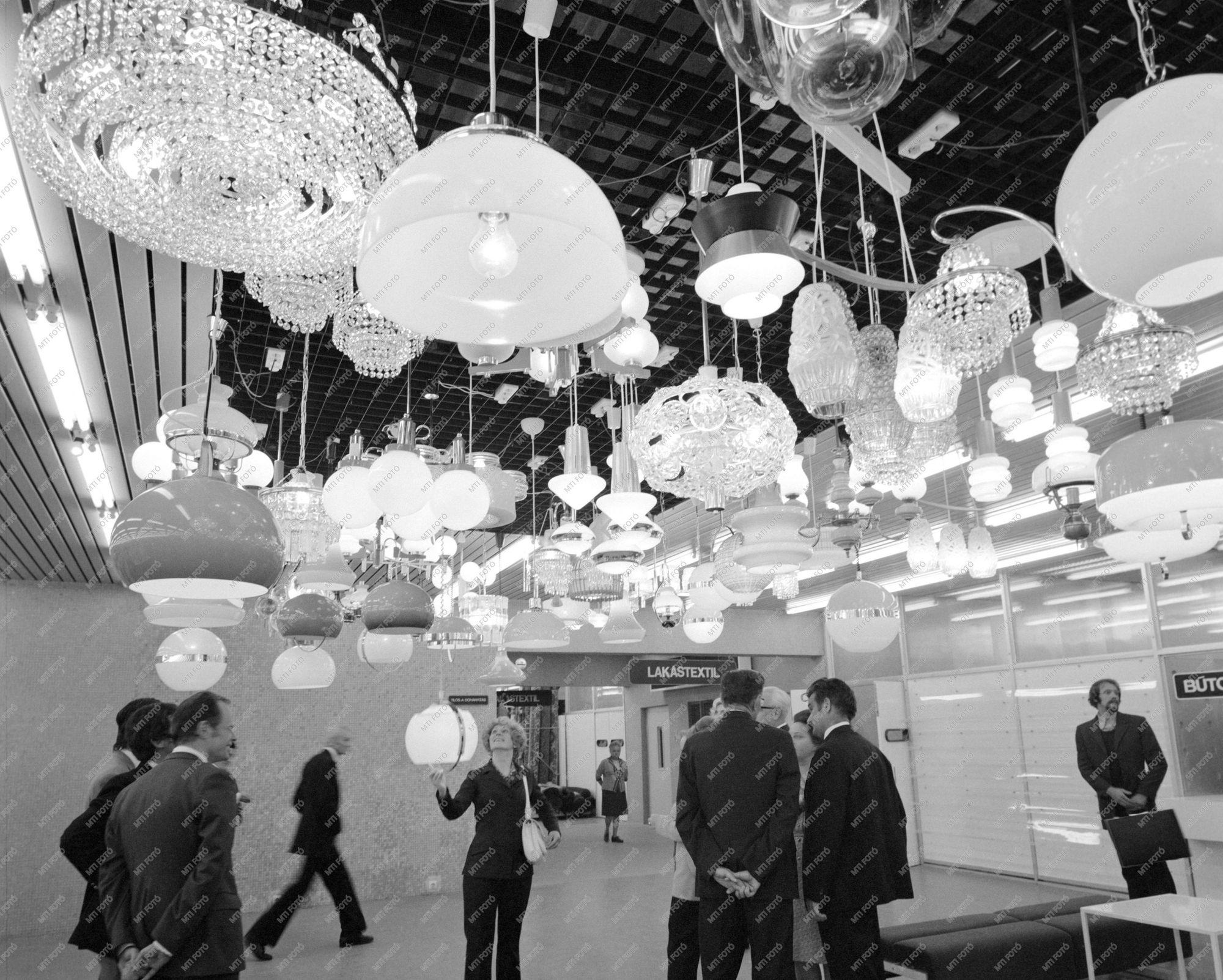
Photo 12: “The Domus department store opened in the capital—Budapest, June 14, 1974. Modern lamps in the newly opened Domus department store on Róbert Károly Boulevard. Domus, the successor of the Bútorértékesítő Vállalat, founded in 1949, opened its first stores in 1974. A network of 16 stores was established throughout the country. Since the opening of Domus in Pest, the flagship Domus has been in continuous operation without a change of profile. The designers at IPARTERV were Antal Lázár and Péter Reimholz.” MTI Photo by Tamás Fényes. Source: MTVA Archívum Fotótár
Internationally, Tibor Házi’s lamps have many relatives: in addition to the aforementioned Guzzini-Meblo space-age style plastic products, there are the Dutch brands Raak and Gepo, and the sculptural objects of French Jean-Pierre Garrault and Henri Delord’s very elegant, sculptural objects. (For more analogies, see the selection on Vintageinfo website.)
The variously functional pieces of the globe lamp series were available in the shops of the Applied Arts Company and the Képcsarnok, and later, from 1974, they were also sold in Domus department stores. As Házi pointed out in his description of the Békéscsaba exhibition, the lamps were used by the general public, among others, in the rooms and public areas of the Hotel Stadion, built in 1982 (architects: Lajos Tolnay, György Péchy, interior designers: Sándorné Fehérvári, Erzsébet Gothard, Gábor Martin). According to the memories of Gyula Pallás and Vince Házi, pieces of the spherical lamp series were also used in the Hotel Voronyezs in Brno, confirmed by an article in the Magyar Építészet (architects: József Finta, Erzsébet Pózna, Anikó Z. Havas, interior designer: Herrer Caesar).[5] The pendant lamps of the series were hanging all over Budapest in the City Grill fast-food restaurants, which were known as the Hungarian McDonald’s chain. The smallest members of the lamp family were hung on the bedside tables in the rooms of the Hotel Claudius in Szombathely, described in the press of the time as “hyper-modern” (architect: Péter Fazakas, interior designer: Gábor Sellyei).
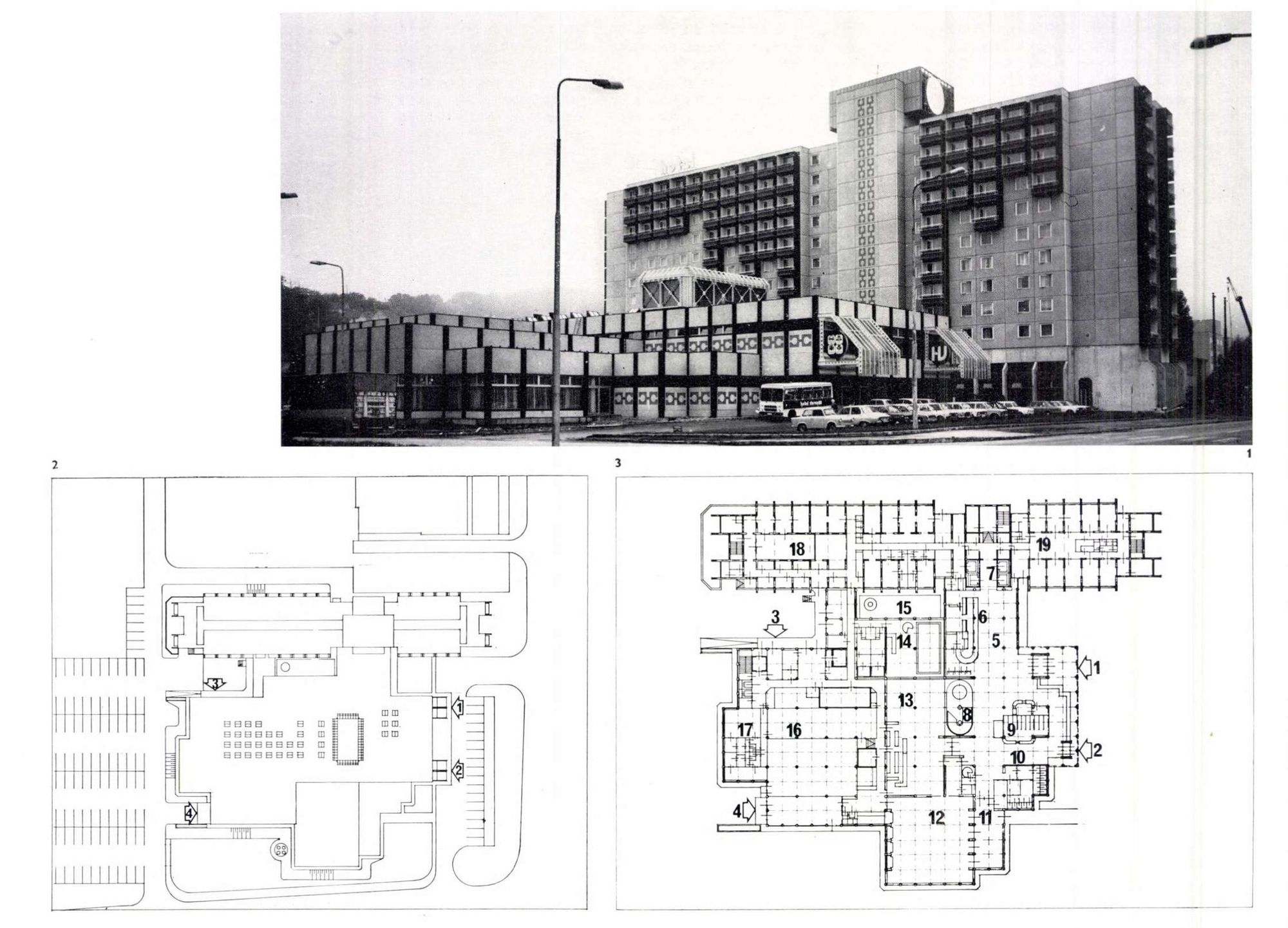
Photo 13: Hotel Voronyezs, Brno, 1979 Source: F.J.: Hotel Voronyezs, Brno (Czechoslovakia). In Magyar Építőművészet. 1980/6, 42.
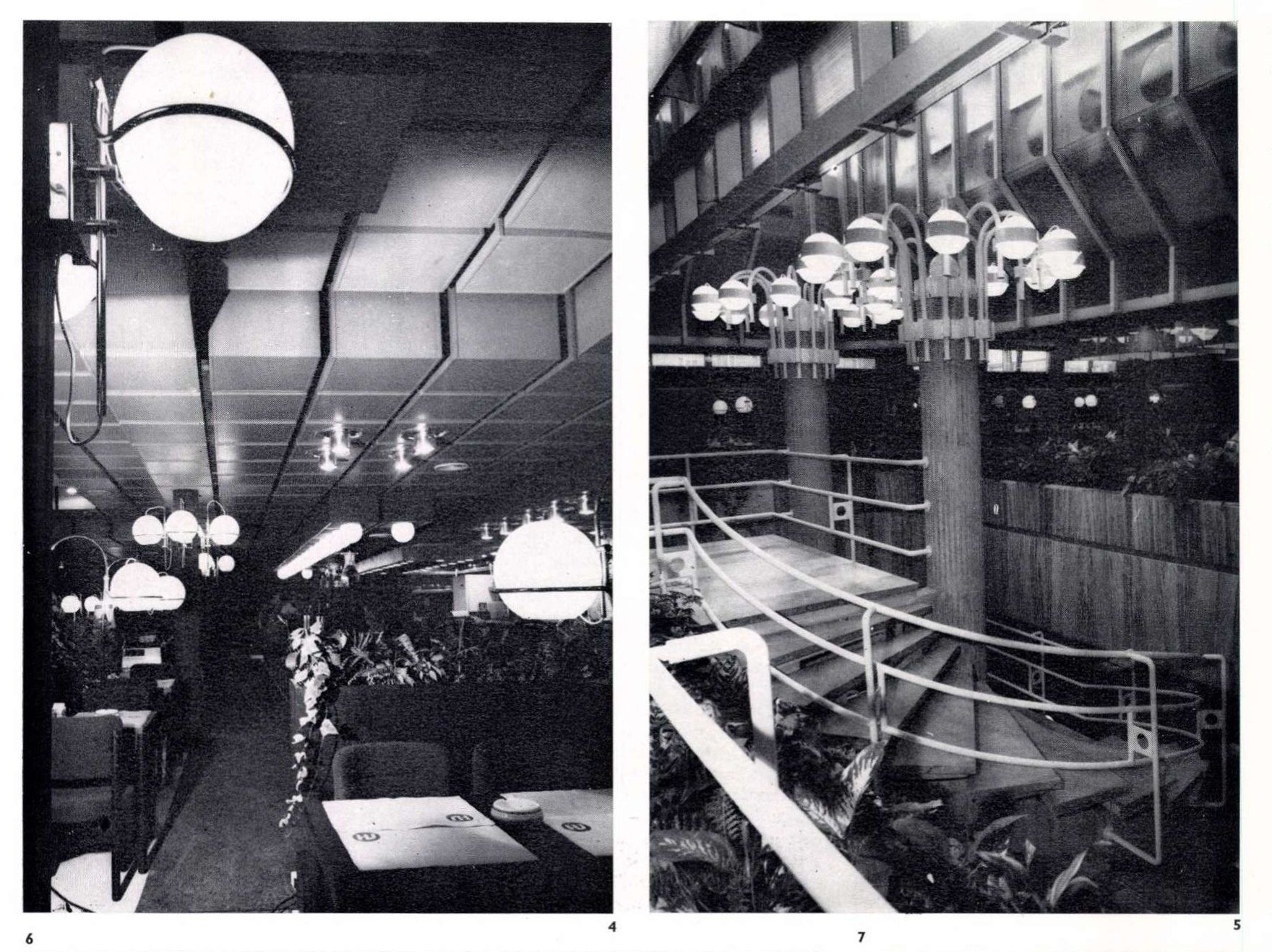
Photo 14: Interior of the Hotel Voronyezs (Snack bar, staircase), Brno, 1979 (The photo on the left shows the wall-mounted pieces of the globe lamp series). Source: F.J.: Hotel Voronyezs, Brno (Czechoslovakia). In Magyar Építőművészet. 1980/6, 45.
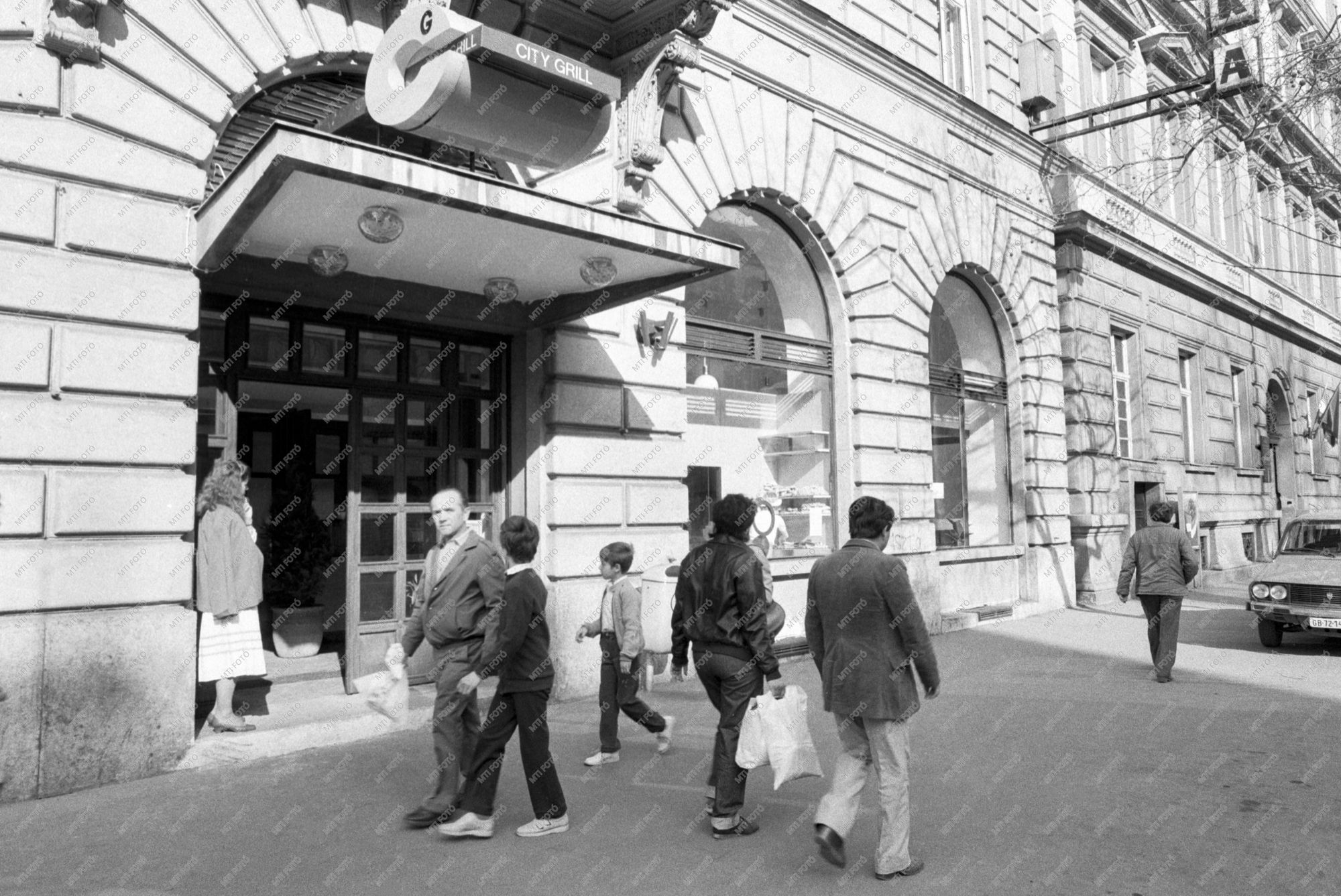
Photo 15: “City-grill fast food restaurant opened in the city center—Budapest, 5 April 1985. The entrance to the City-grill fast food restaurant on Bajcsy-Zsilinszky Street. The Belvárosi Vendéglátó Vállalat opened a McDonald’s-style fast food restaurant under the name City-grill. The new restaurant is part of a fast-food system that offers a full range of products to customers throughout its opening hours.” MTI Photo by László Varga. Source: MTVA Archívum Fotótár

Photo 16: “Guests in the City-grill fast food restaurant—Budapest, April 5, 1985” MTI Photo by László Varga. Source: MTVA Archívum Fotótár here and here
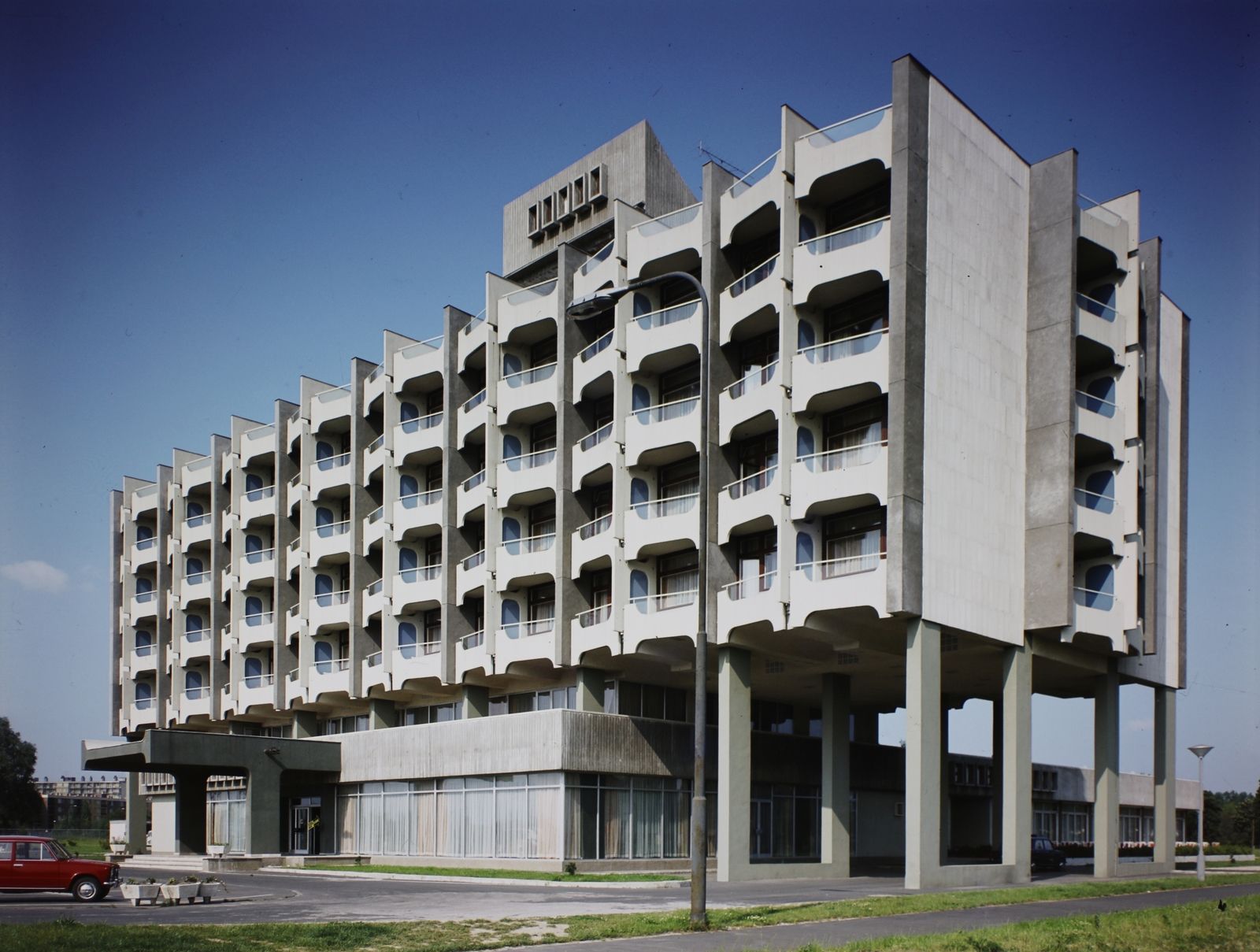
Photo 17: Hotel Claudius, Szombathely, 1976. Source: fortepan—donated by Tibor Inkey, photo no.: 120808

Photos 18-19: The interiors of the Hotel Claudius, Szombathely, 1972 (The left photo shows the lamp of Konsztandinidisz Iraklisz on the corner of the reception desk) Source: fortepan—donated by Sándor Bauer, photo nos. 126688 and 110954

Photo 20: “One of the rooms of Hotel Claudius—Szombathely, August 16, 1983” MTI Photo by Tamás Farkas. Source: MTVA Archívum Fotótár
After the change of regime, Tibor Házi was looking for opportunities where he could freely experiment with different glass techniques, such as blow molding. Together with his friend György Rénes, also a glass designer, they wanted to set up their own glassworks in Parádsasvár, but this was only later realized through Rénes’ son.
In 1991, in Bárdudvarnok, Házi was one of the founders of the Goszthonyi Mária Nemzetközi Üveg Alkotótelep és Szimpozion Alapítvány, which has organized several symposiums. Here he made his vases entitled Szívügyeim (My Heart Affairs—free translation) and his glass sculptures entitled Galapagos.
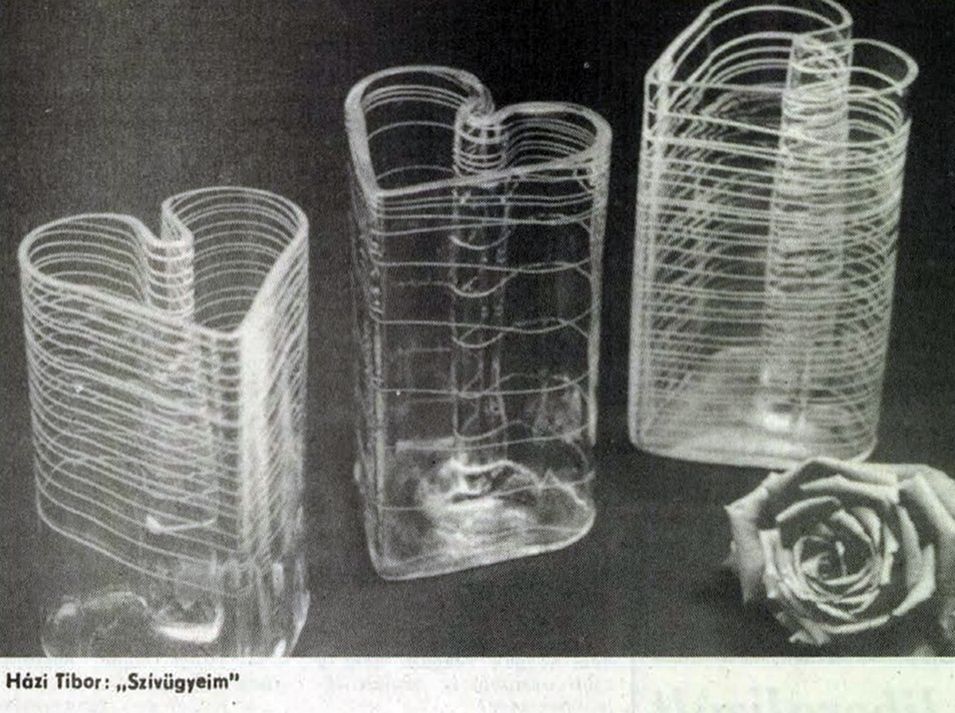
Photo 21: Tibor Házi: Szívügyeim—vase series. Source. In Népszava. T.T.L., T.S., Vol. 119, No. 197, No. 6, August 23, 1991.

Photo 22: Tibor Házi: Round-A, Round-B—vases. Kortárs Magyar Üveg 1990—Catalogue of the I. Tihanyi Üvegtriennálé (pages 18 and 35) Source: Arcanum Digitális Tudománytár
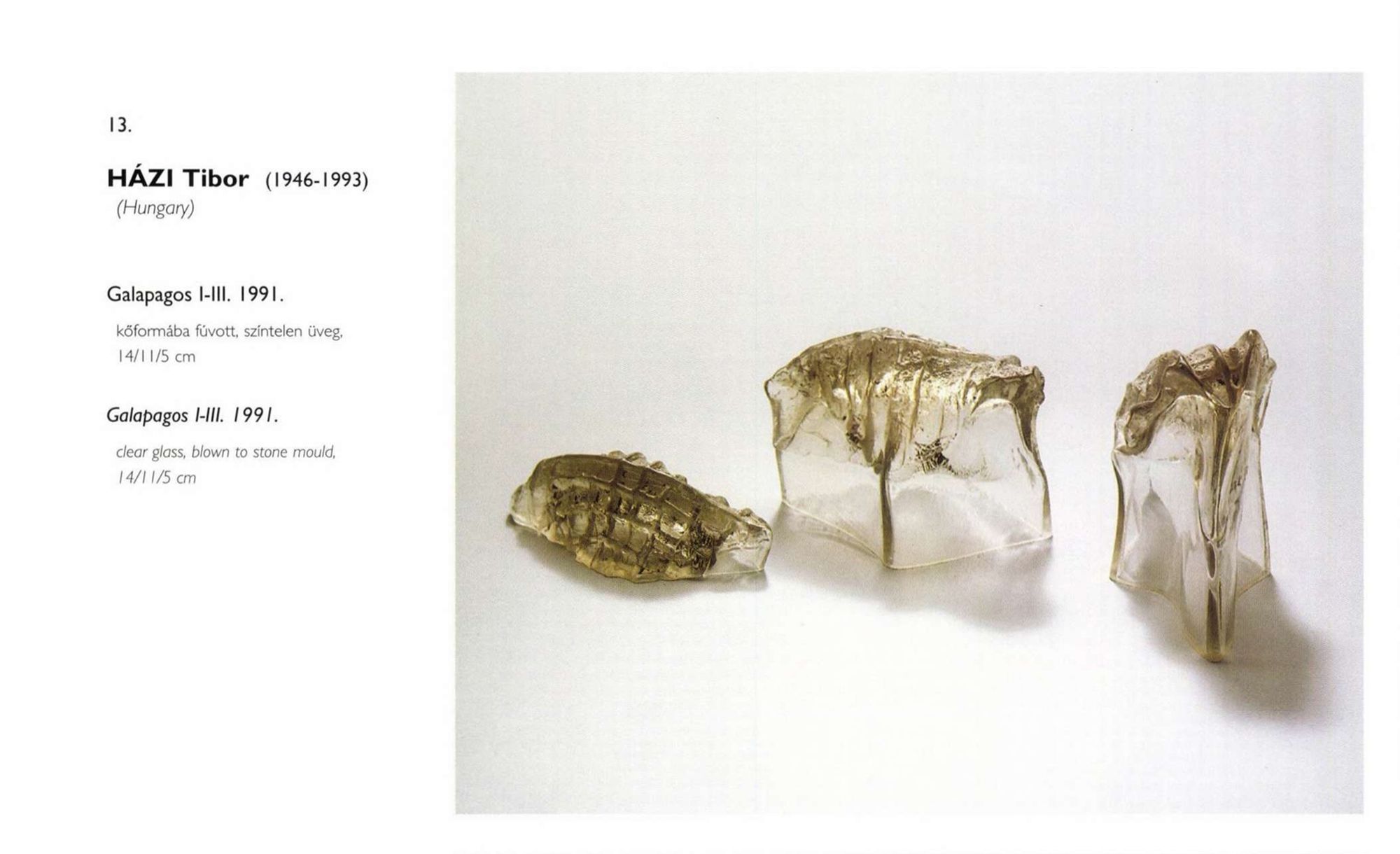
Photo 23: Tibor Házi: Galapagos I-III—glass sculptures. International Glass Symposiums—Bárdudvarnok-Bárdibükk, Hungary, 199-1995 (pages 20 and 47) Source: Arcanum Digitális Tudománytár
Unfortunately, Tibor Házi was unable to complete his experiments. His memory is commemorated by a permanent exhibition in Bárdudvarnok and a traveling award (this year reorganized as an artist’s prize). In addition to Bárdudvarnok, his objects are in the collections of Veszprém, Kaposvár and the Museum of Applied Arts. His creative talent was passed on to his daughter, Borbála Illényi-Házi, one of his three children, who graduated in weaving from the Hungarian University of Applied Arts in 2003.[6]
[1] Pieces of the bowl set designed between 1973 and 1975 are in the Ceramics and Glass Collection of the Museum of Applied Arts, Nos 88.358-88.361.
[2] The Museum of Applied Arts Contemporary Design Collection includes two Guzzini-Meblo floor lamps, see inventory numbers 2018.24.1. and 2020.53.1., the latter donated to the museum by Dávid Kovács.
[3] Tibor Házi himself commented on this in an interview:
“After college, a graduate designer has two paths: to become a glass factory designer or to freelance. (Which often means »free drowning«.) After some trial and error, when I discovered that by »lamp design« many people meant cutting and decorating parchment and rayon lampshades—I chose my own path. I designed a floor lamp with a pear-shaped metal frame. I had to find an ironmonger to make the iron core, a pipe bender, a grinder, a polisher, a nickel-plating and a chrome-plating machine. Parts had to be made in sufficient quantities to make it all assembled. I was also very lucky to meet a technician who has since become my partner and fellow creator, Gyula Pallás, who contributes with a lot of ideas to the work we do together.”
Aliz TORDAY: The lamp in the reflector light. Tibor Házi and OPTEAM. In Esti Hírlap. 1980 (June 12), Vol. 25 No. 137. [No page numbers, highlights in the original text.]
The glass designer’s not-so-unique story correlates with József Vadas’ bitter observation that factories in Hungary do not employ lamp designers—all of which appeared in his review of the book, “Telltale”:
József VADAS: Inglorious lights. In Life and Literature. (September 18, 1976), Vol. 20 No. 38, 12.
[4] Telephone interview with Vince Házi on October 14, 2021.
[5] F.J.: Hotel Voronyezs, Brno (Czechoslovakia). In Hungarian Architecture. 1980/6, 42-46.
[6] My sincere thanks for all the help in this research to Vince Házi and J. Gyula Pallás.
In our Object Fetish series, we tell you about emblematic pieces of domestic object culture. We explore objects and their designers: we ask questions, we investigate, we discover. A bi-monthly edition in the collaboration of Kitti Mayer and Piroska Novák, design theorists.
Collaborating partner for the series:
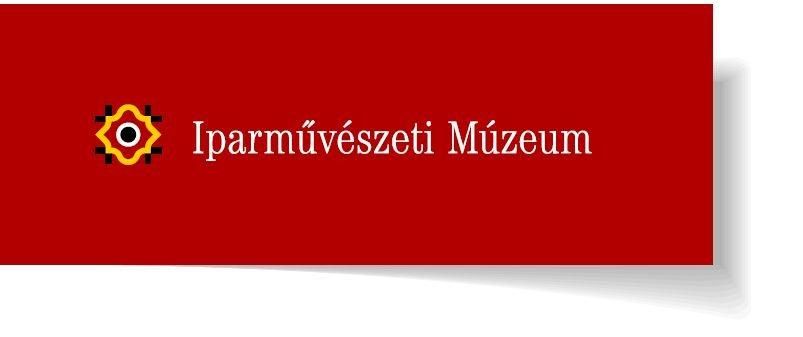

Comfort in the middle of the Caucasus | Fifth Season
